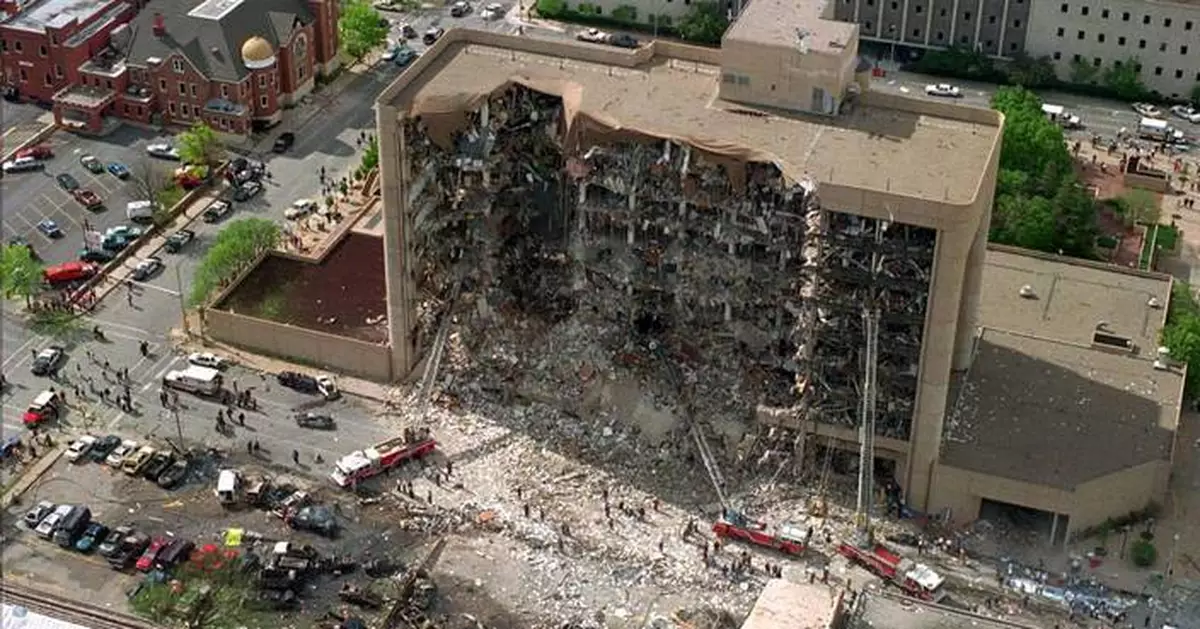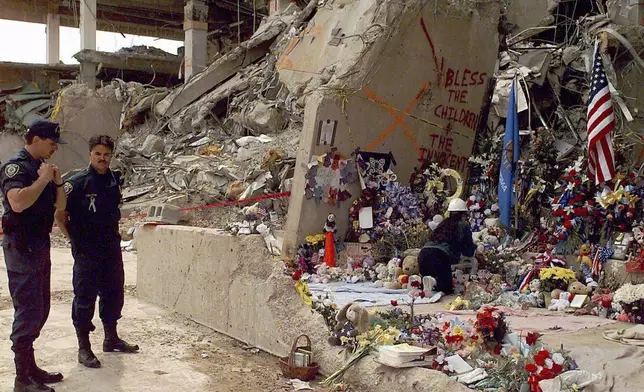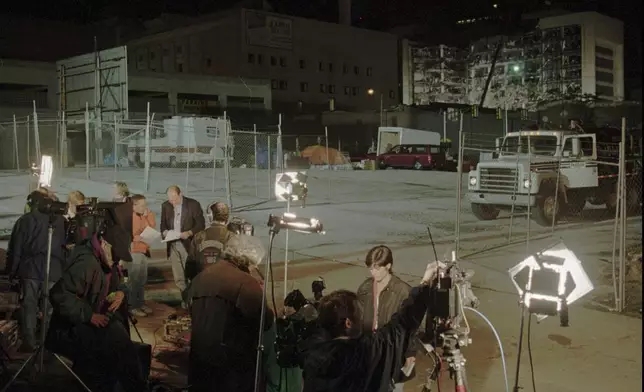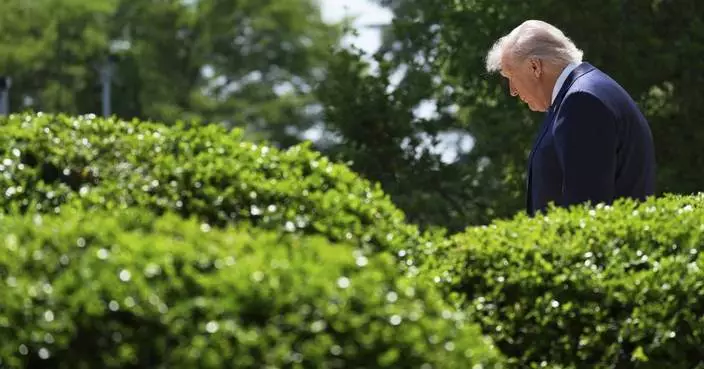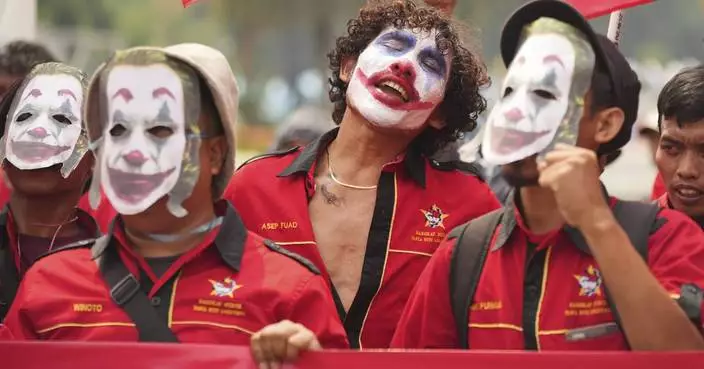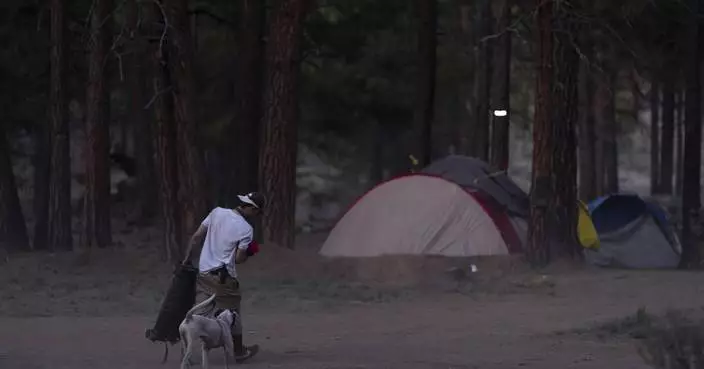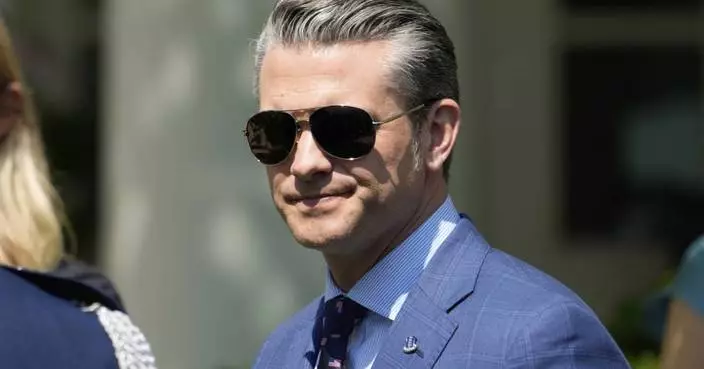OKLAHOMA CITY (AP) — EDITORS NOTE: On April 19, 1995, a former U.S. Army soldier parked a rented Ryder truck loaded with a powerful bomb made of fertilizer and fuel oil outside a federal office building in Oklahoma City. The blast at the Alfred P. Murrah Federal Building killed 168 people, including 19 children, and injured more than 500 others in what remains the deadliest homegrown attack on American soil.
It was 9:02 a.m. in the Oklahoma City bureau of The Associated Press when a handful of staffers, some just getting to work, were startled by what felt like a small quake rattling the office.
Some guessed it was a nearby gas explosion. Then reports started trickling in.
“It didn’t take long at all for the gravity of the event to set in,” said Linda Franklin, the AP's Oklahoma City news editor at the time.
She quickly dispatched reporters and photographers to the downtown Alfred P. Murrah Federal Building about 6 miles (10 kilometers) away. They would become among the first journalists on the scene of the deadliest homegrown attack in U.S. history: an explosion that killed 168 people, including 19 children, and left more than 500 others injured.
Judy Gibbs Robinson, then a broadcast editor for the AP whose job was mostly filing brief stories for radio and TV, was the first AP reporter to arrive downtown.
“I still remember the dress shoes I was wearing, because they had fabric on the sides and I was stepping over glass,” Gibbs Robinson said. "A lot of people were just pointing and saying: ‘It’s downtown. It’s downtown.’”
In some ways, Gibbs Robinson was prepared for the moment. A broadcast training she had recently attended urged reporters to record all the sights and sounds of a news event. As she made her way closer to the building, the AP veteran put those skills to work.
“I just started talking and watching and listening, describing what I was seeing," she said.
Thirty years later, what Gibbs Robinson witnessed is still seared into her memory. Parents reuniting with their children at a YMCA daycare near the blast site. A man whose suit looked untouched from the front but was shredded in the back because his back was turned to a window when the blast erupted.
Cellphones were not yet commonplace, but Gibbs Robinson needed to call the newsroom. She entered a bank, where employees had stretched a landline telephone out onto a ledge, making it available to anyone. Meanwhile, emergency responders streamed into the area.
"That was how I filed my first report,” she said.
Back in the newsroom, Franklin and other staffers pushed a steady stream of copy and photos onto the AP wire for newspapers and broadcasters around the world. The phones rang constantly, with other media outlets inquiring about AP copy or asking for the names of people killed or wounded.
“I remember feeling like an octopus that day. I just didn’t have enough arms,” said Lindel Hutson, the bureau chief in Oklahoma City.
The newsroom was moving in a blur and, amidst it all, a stranger walked through the door. Hutson recalled almost being too busy to talk to the man, who said he was an amateur photographer and wanted to show the AP pictures he had snapped at the blast site.
Hutson and David Longstreath, an AP staff photographer, took a moment to see what he had. One image jumped out immediately. It showed an Oklahoma City firefighter cradling a fatally wounded baby in his arms.
“I thought, 'Oh my God.’ This is it,” Hutson recalled.
On the spot, Hutson negotiated a deal with the photographer, Charles Porter, to purchase the image. The photo won Porter the 1996 Pulitzer Prize for spot news photography and remains one of the most defining images of the attack.
“I think that picture probably said more than 1,000 words could about what happened down there," Hutson said.
By the end of the night, the Oklahoma City bureau had become a cramped hotbed of activity. AP reporters, editors and photographers from across the country had descended on the small office for the story that would consume the staff in the months ahead.
For everyone who had a role in the coverage, it was among the most significant event in their professional lives.
“This happened in our backyard,” Hutson said. “It took quite a mental toll on everyone.”
Following is the story the AP published on the day of the bombing, Wednesday, April 19, 1995, before the true death toll was known.
By JUDY GIBBS
Associated Press
OKLAHOMA CITY — A car bomb ripped deep into America’s heartland Wednesday, killing more than 20 people and leaving 300 missing in a blast that gouged a nine-story hole in a federal office building. Seventeen of the dead were children whose parents had just dropped them off at a day care center, a doctor said.
“We’re sure that that (death toll) will go up because we’ve seen fatalities in the building,” Fire Chief Gary Marrs said.
There was no immediate claim of responsibility for the attack, the deadliest U.S. bombing in 75 years.
At least 200 people were injured — 58 critically, Marrs said — and dozens of others were feared trapped in the rubble of the Alfred Murrah Building.
“I dove under that table,” said Brian Espe, a state veterinarian who was giving a slide presentation on the fifth floor. “When I came out, I could see daylight if I looked north and daylight if I looked west.”
Attorney General Janet Reno refused to comment on who might have been behind the attack. President Clinton called the bombers “evil cowards” and Reno said the government would seek the death penalty against them.
Their clothes torn off, victims covered in glass and plaster emerged bloodied and crying from the building, which looked as if a giant bite had been taken out of it, exposing its floors like a dollhouse.
Cables and other debris dangled from the floors like tangled streamers in a scene that brought to mind car bombings at the U.S. Embassy and the U.S. Marine barracks in Lebanon in 1983.
Mayor Ron Norick said the blast was caused by a car bomb that left a crater 8 feet deep. He said the car had been outside, in front of the building.
"Obviously, no amateur did this," Gov. Frank Keating said. “Whoever did this was an animal.”
Paramedic Heather Taylor said 17 children were dead at the scene. The children, all at the day care center, ranged in age from 1 to 7, and some were burned beyond recognition, said Dr. Carl Spengler, who was one of the first doctors at the scene.
Reno said that 300 people were unaccounted for by late afternoon. About 20 of 40 children in the day-care center were missing.
The explosion, similar to the terrorist car bombing that killed six people and injured 1,000 at New York’s World Trade Center in 1993, occurred just after 9 a.m., when most of the more than 500 federal employees were in their offices.
The blast could be felt 30 miles away. Black smoke streamed across the skyline, and glass, bricks and other debris were spread over a wide area. The north side of the building was gone. Cars were incinerated on the street.
People frantically searched for loved ones, including parents whose children were in the building’s day-care center.
Christopher Wright of the Coast Guard, one of those helping inside the building, said rescuers periodically turned off their chainsaws and prying tools to listen for calls of help, ``but we didn’t hear anything — just death.″
“You’re helpless really, when you see people two feet away, you can’t do anything, they’re just smashed,” he said.
The building has offices of such federal agencies as the Bureau of Alcohol, Tobacco and Firearms, Social Security, Veterans Affairs, the Drug Enforcement Administration and Housing and Urban Development, and a federal employee credit union and military recruiting offices.
The office was built in 1974 and includes an underground parking garage.
The bomb was perhaps 1,000 to 1,200 pounds, said John Magaw, ATF director. As for whether his agency suspected terrorists, he told CNN: “I think any time you have this kind of damage, this kind of explosion, you have to look there first.”
More than two hours after the explosion, people were still trapped in the building.
“We have to crawl on our stomachs and feel our way and we’re talking to victims who are in there and reassuring them that we’re doing everything within the good Lord’s power to reach them and get to them,” Assistant Fire Chief Jon Hansen said. “It’s going to be a very slow process.”
The explosion heightened U.S. fears of terrorism. Federal buildings in several cities were evacuated because of bomb threats, and the government ordered tightened security at federal buildings throughout the country.
In 1920, a bomb blast in New York’s Wall Street area killed 40 people and injured hundreds. Authorities concluded it was the work of “anarchists” and came up with a list of suspects, but all had fled to Russia.
Emergency crews set up a first aid center nearby, and some of the injured sat on the sidewalks, blood on their heads or arms, awaiting aid. St. Anthony Hospital put out a call for more medical help, and at midday, posted a list of more than 200 names of injured so worried relatives could look for loved ones.
“It was like Beirut; everything was burning and flattened,” said Spengler, who arrived minutes after the blast.
Carole Lawton, 62, a HUD secretary, said she was sitting at her desk on the seventh floor when “all of a sudden the windows blew in. It got real dark and the ceiling just started coming down” She then heard “the roar of the whole building crumbling.” She managed to crawl down some stairs and was not injured.
The explosion occurred on the second anniversary of the fiery, fatal ending to the federal siege of the Branch Davidian compound in Waco, Texas. That siege began with a raid by ATF agents a month and a half earlier.
Oklahoma City FBI spokesman Dan Vogel wouldn’t speculate if there was a connection. The FBI’s offices are about five miles away. Dick DeGuerin, who was cult leader David Koresh’s lawyer, said any such link was just speculation.
In the World Trade Center bombing in February 1993, a rented van blew up in a parking garage beneath the twin towers. Four Muslims were convicted.
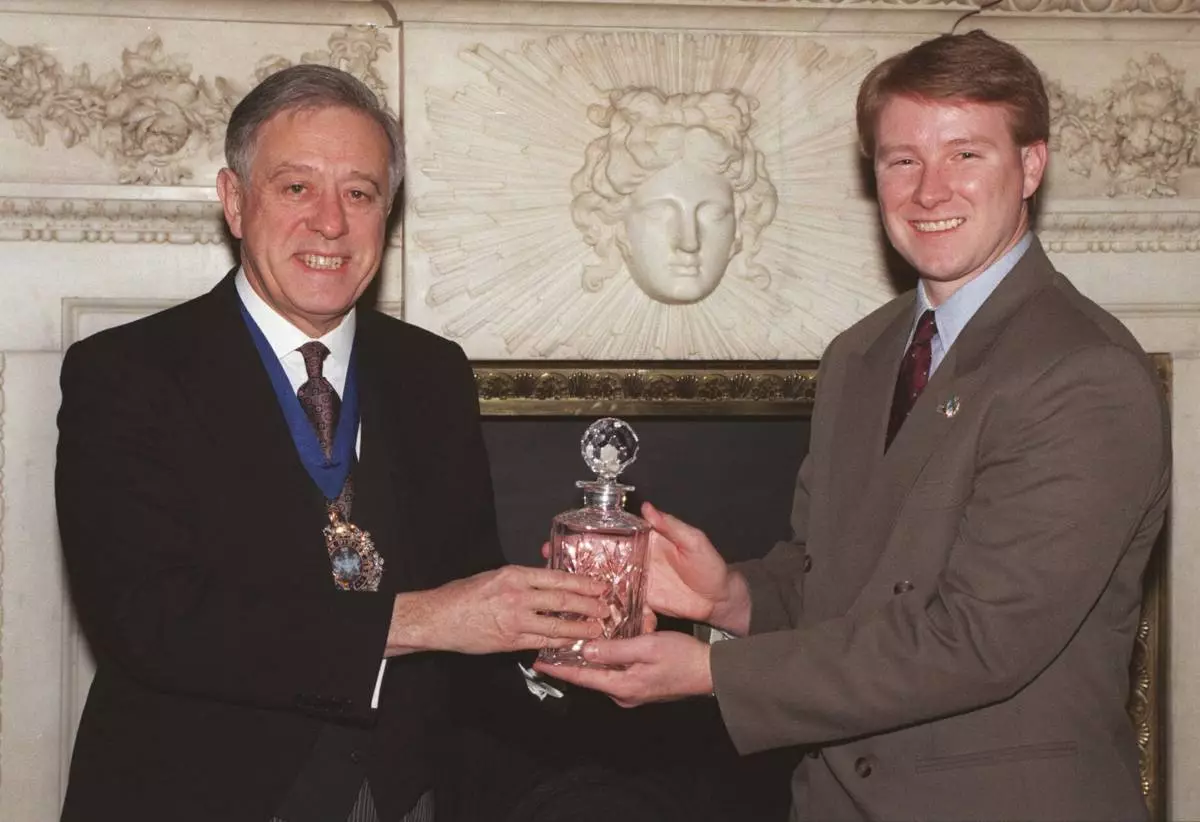
FILE - Charles "Chuck" Porter IV receives an award for his picture of a firefighter holding a baby in the aftermath of the Oklahoma bombing in London's Mansion House from the Lord Mayor of London Alderman John Chalstrey, right, on Jan. 26 1996, in London's Mansion House. (AP Photo/Dave Caulkin, File)
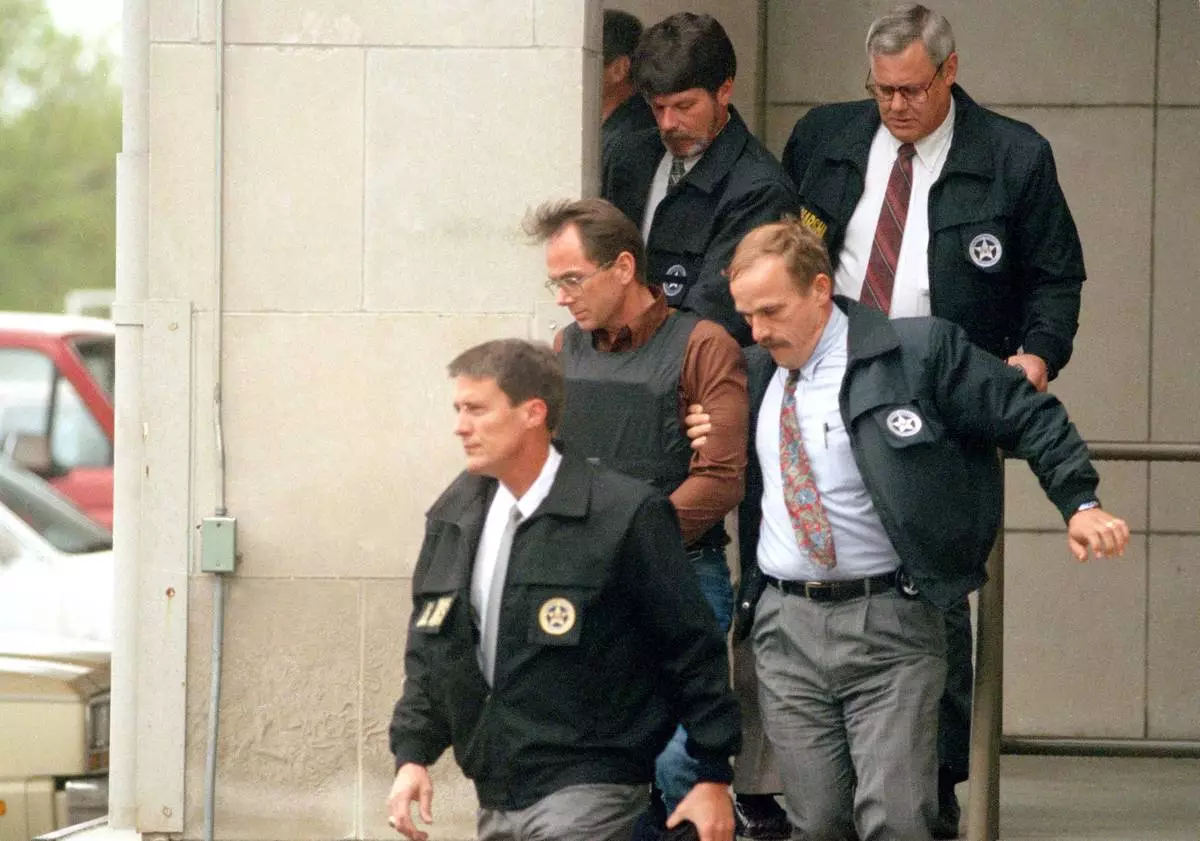
FILE - Terry Nichols, wearing a bullet-proof vest, is escorted by U.S. marshals as he leaves the federal courthouse in Wichita, Kansas, on April 26, 1995. (AP Photo/Steve Rasmussen, File)
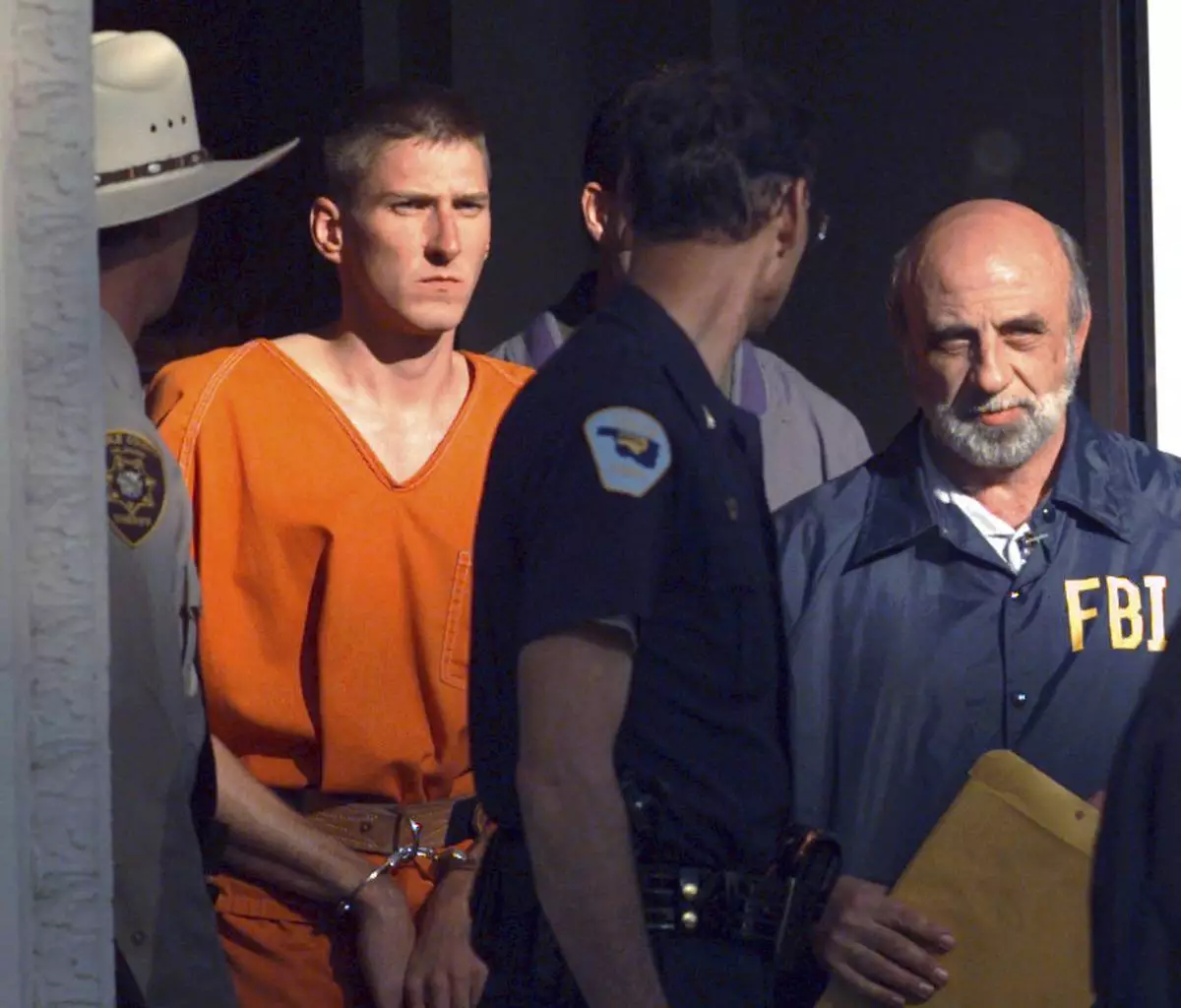
FILE - Timothy James McVeigh, identified as a suspect in the bombing of the Oklahoma City Federal building, is lead out of the Noble County Courthouse in Perry, Okla., by state and federal law enforcement officials on April 21, 1995. (AP Photo/John Gaps III, File)
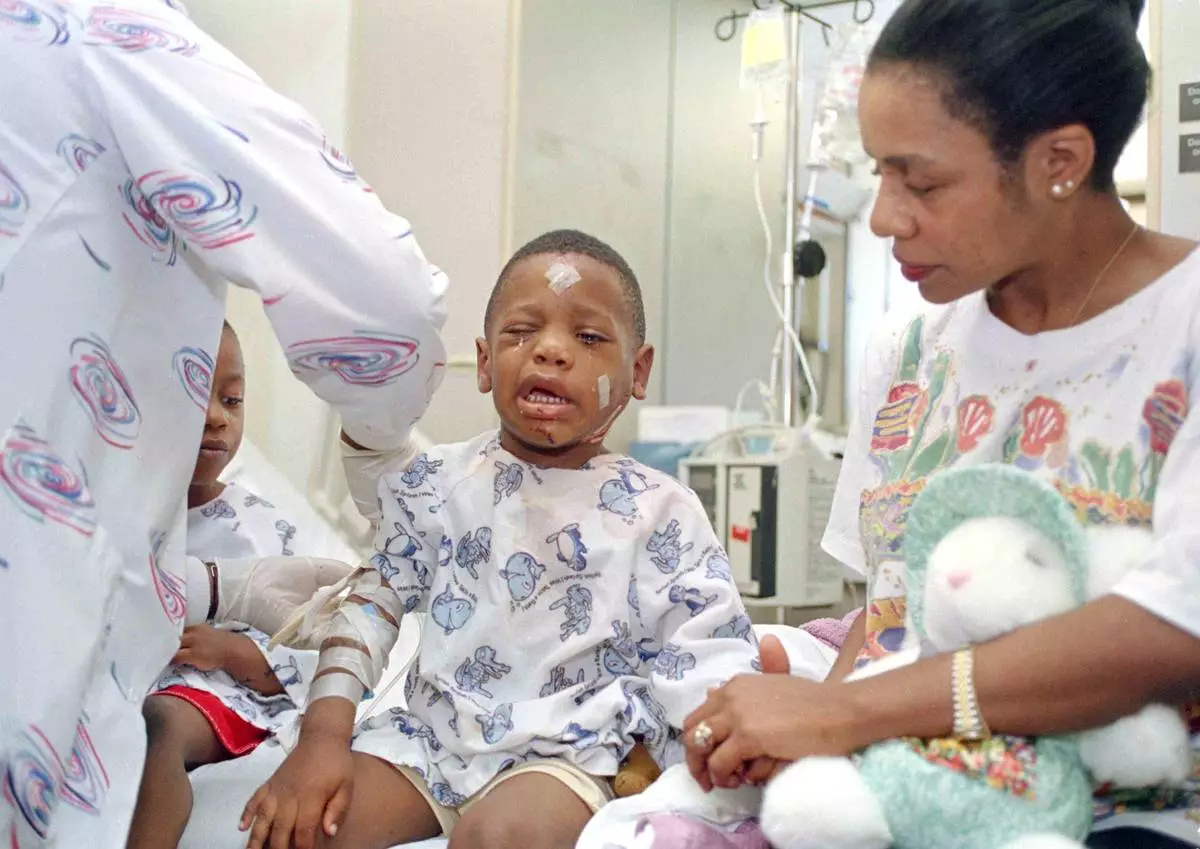
FILE - Davetta Green comforts her son, James Green, as a nurse removes an I.V. at Presbyterian Hospital in Oklahoma City on April 20, 1995. James was injured when he and his mother were in the YMCA building across the street from the Alfred P. Murrah Federal Building when it was bombed. (AP Photo, File)
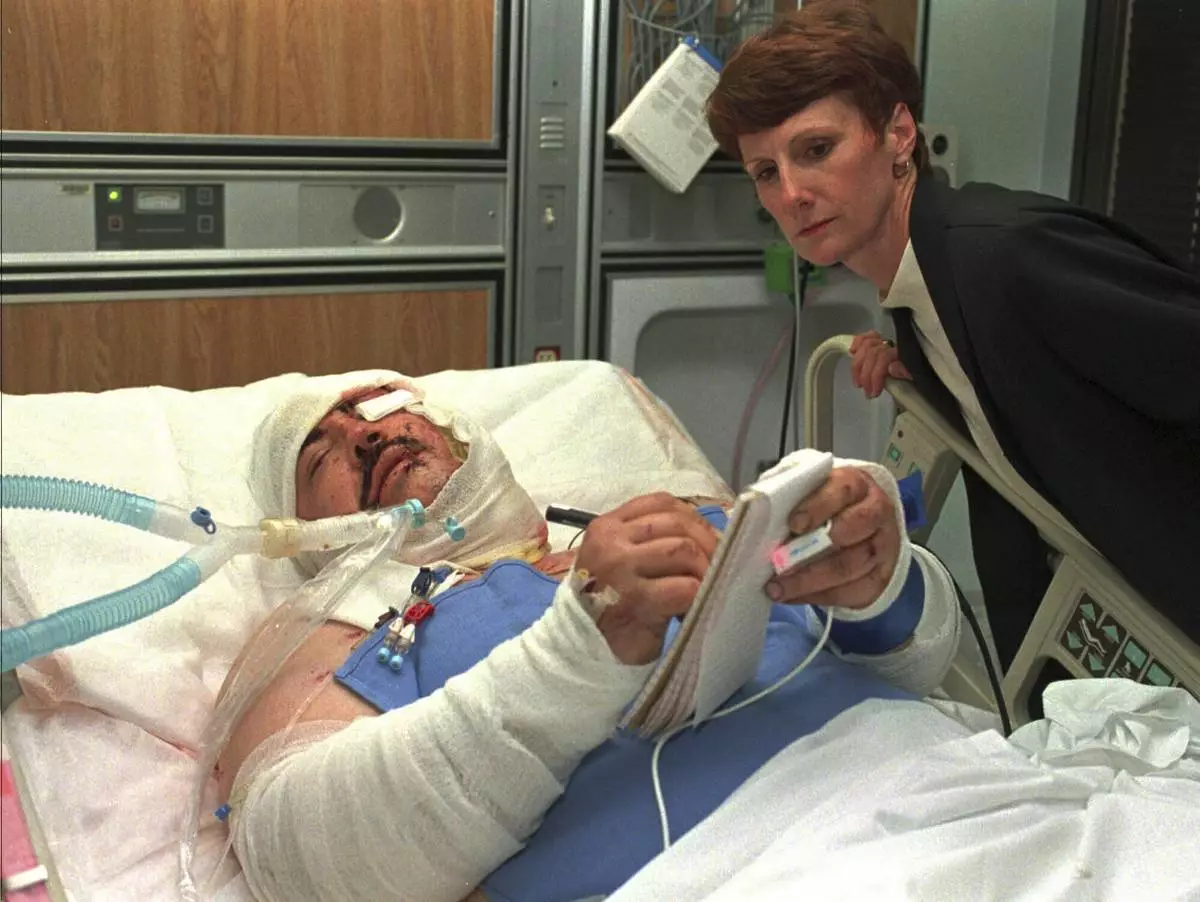
FILE - Randy Ledger, who was severely injured by the bomb blast at the Alfred P. Murrah Federal Building, writes a note from his bed in the intensive care unit of Presbyterian Hospital in Oklahoma City on April 20, 1995, as his sister, Linda Halford, watches. (AP Photo/Pat Sullivan, File)
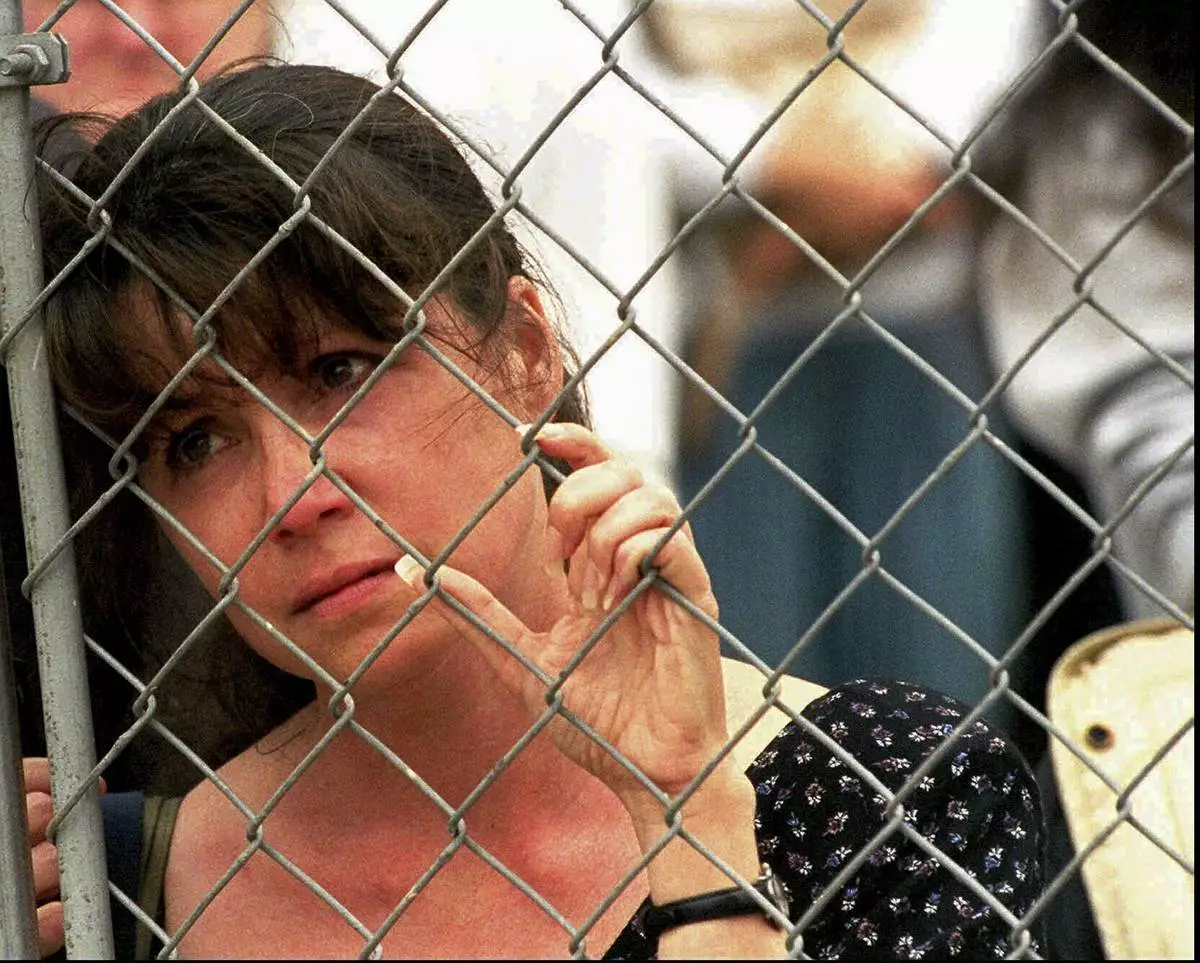
FILE - Karen Ellison looks through a chain link fence at a memorial service for rescue workers and volunteers at the Alfred P. Murrah Federal Building in Oklahoma City on May 5, 1995. (AP Photo J. Pat Carter, File)

FILE - Officials stand near the Alfred P. Murrah Federal Building as workers place flowers and memorial items at the scene of the explosion in Oklahoma City on May 5, 1995. (AP Photo/J. Pat Carter, File)
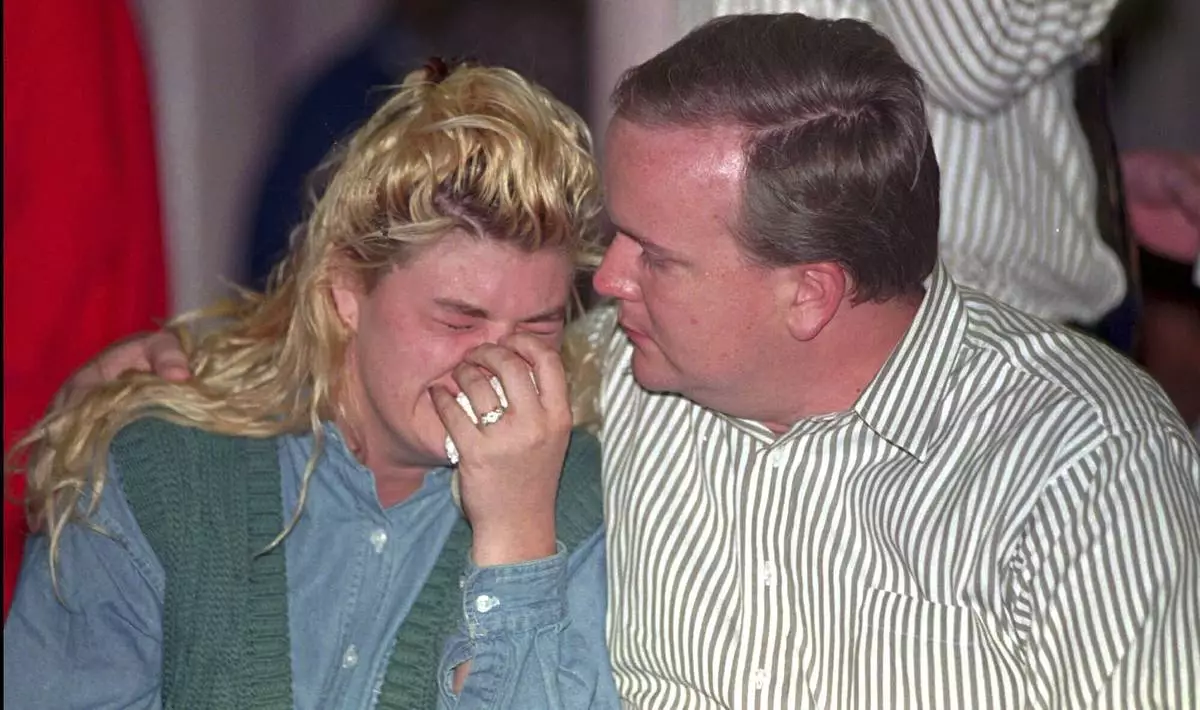
FILE - Family members wait for word about their missing relatives on April 19, 1995 at the First Christian Church in Oklahoma City, after a truck bomb exploded in the Alfred P. Murrah Federal Building. (AP Photo/J. Pat Carter, File)
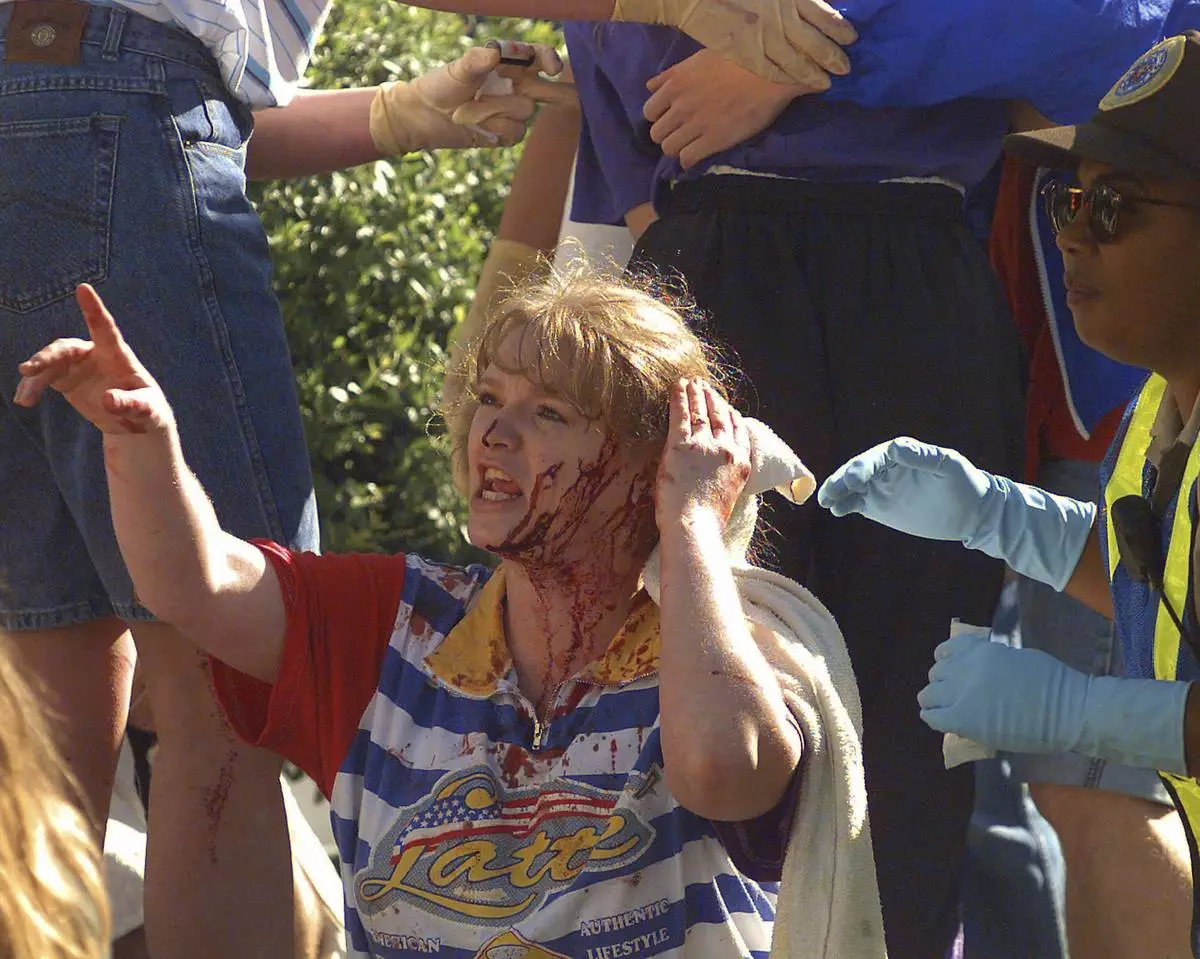
FILE - An unidentified woman calls out to friends as she waits for treatment following a bomb blast at the Alfred P. Murrah Federal Building in downtown Oklahoma City, April 19, 1995. (AP Photo/David Longstreath, File)

FILE - Television reporters report from the bombed Alfred P. Murrah Federal Building, back right, on April 20, 1995, in Oklahoma City. (AP Photo/Pat Sullivan, File)
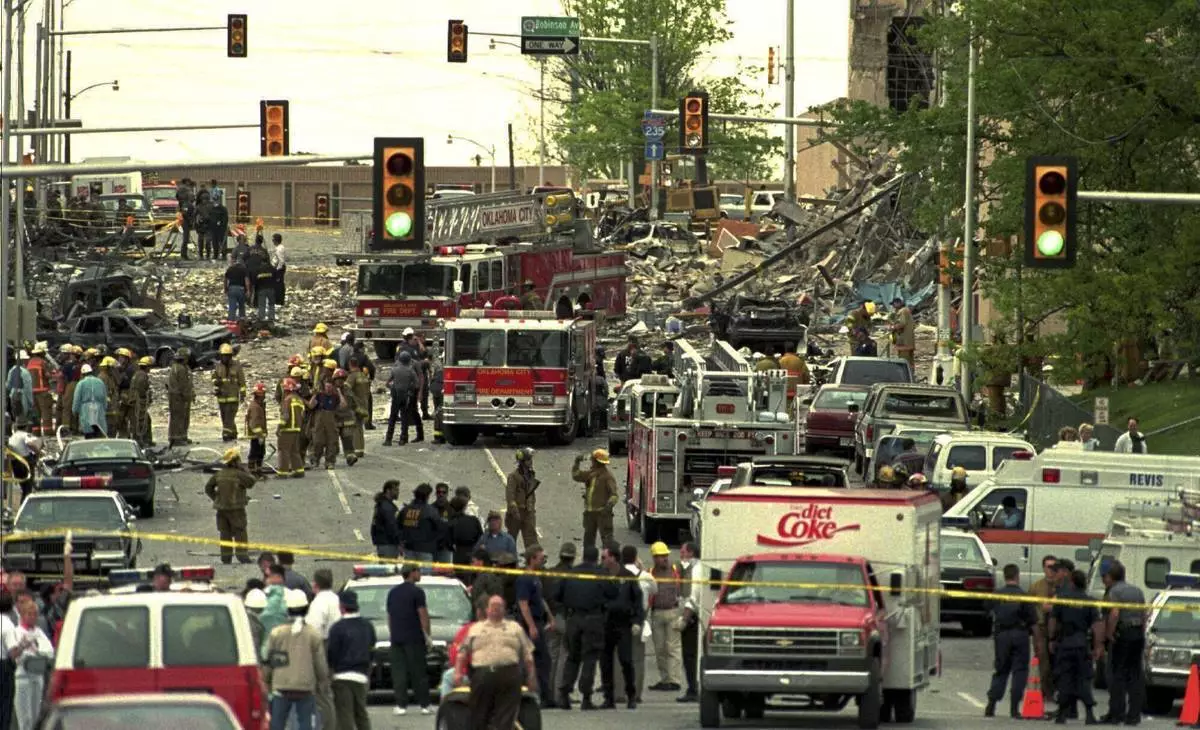
FILE - The streets surrounding the Alfred P. Murrah Federal Building in Oklahoma City are swamped with emergency vehicles and personnel on April 20, 1995, after a bomb tore through the building. (AP Photo/David J. Phillip, File)
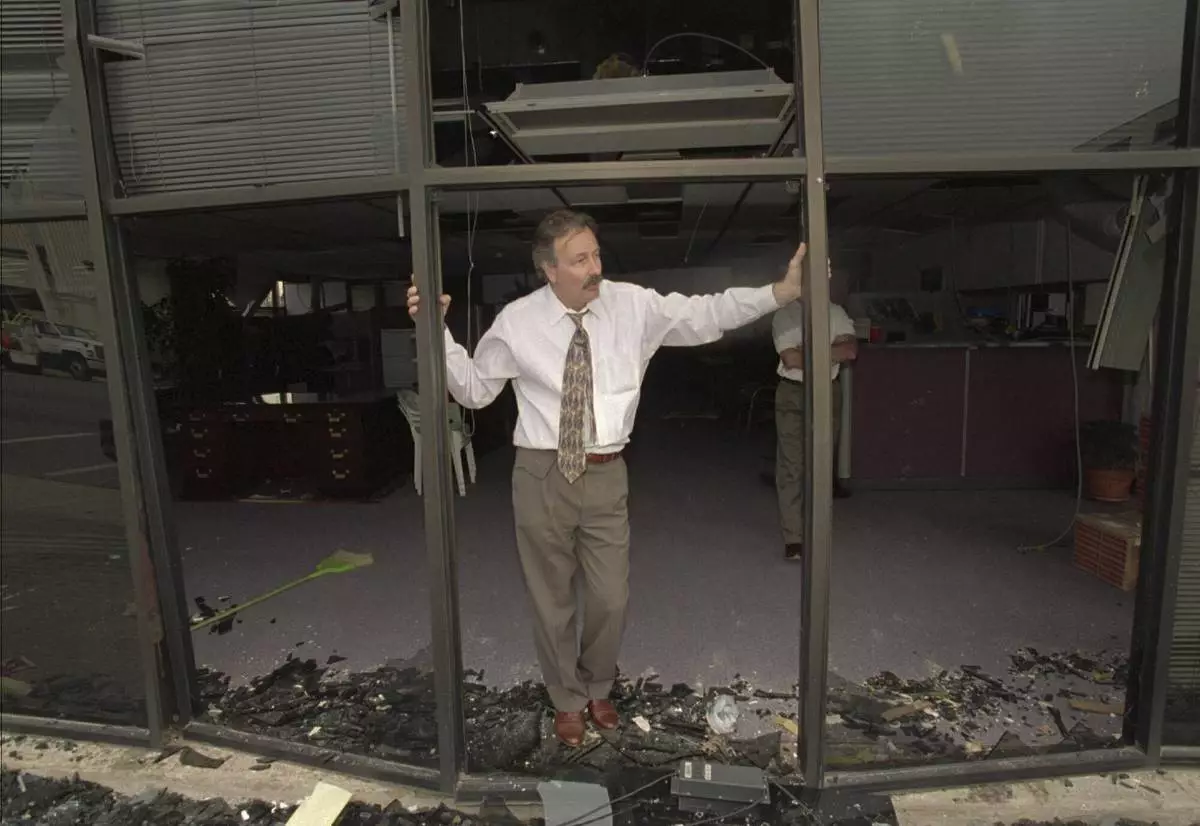
FILE - A man stands in the blown-out doorway of a downtown business a few blocks from the Alfred P. Murrah Federal Building, which was destroyed by a massive bomb, on April 19, 1995, in Oklahoma City. (AP Photo/Rick Bowmer, File)
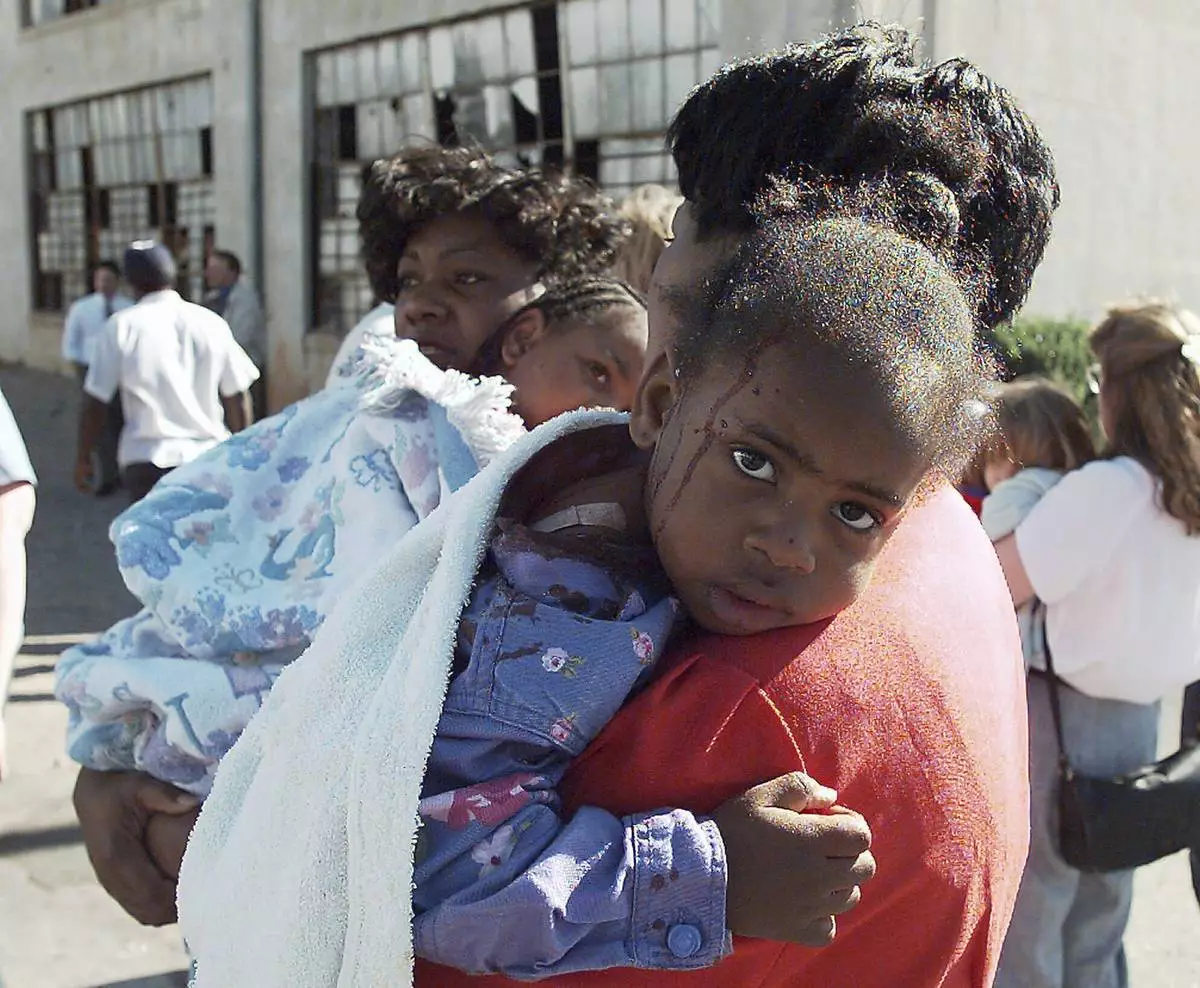
FILE - A woman comforts an injured child following an explosion at the Alfred P. Murrah Federal Building in Oklahoma City on April 19, 1995. (AP Photo/David Longstreath, File)
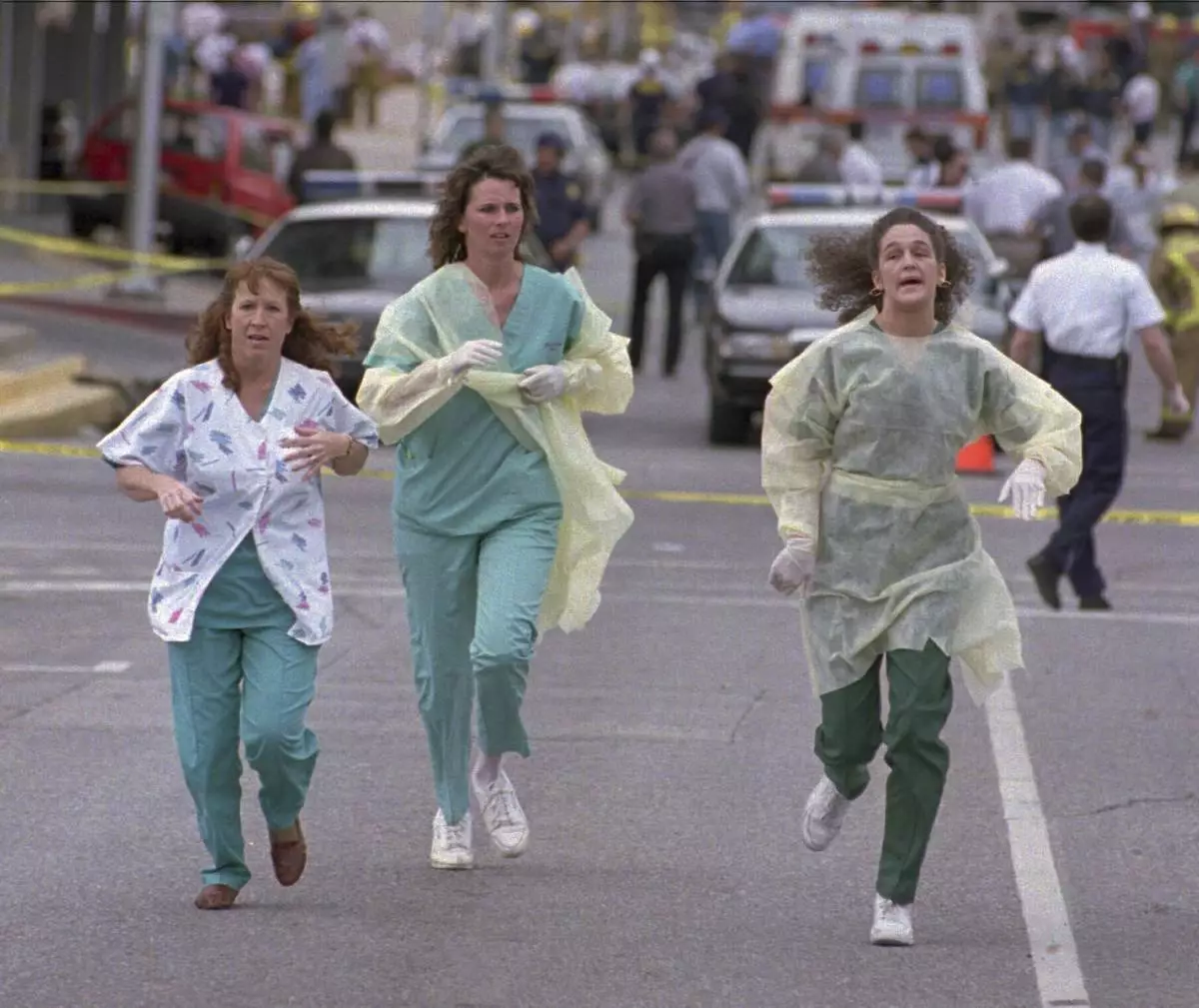
FILE - Medical assistants Janet Froehlich, Wilma Jackson and Kerri Albright run from the Alfred P. Murrah Federal Building after being told another bomb device had been found on April 19, 1995, in Oklahoma City. (AP Photo/David J. Phillip, File)
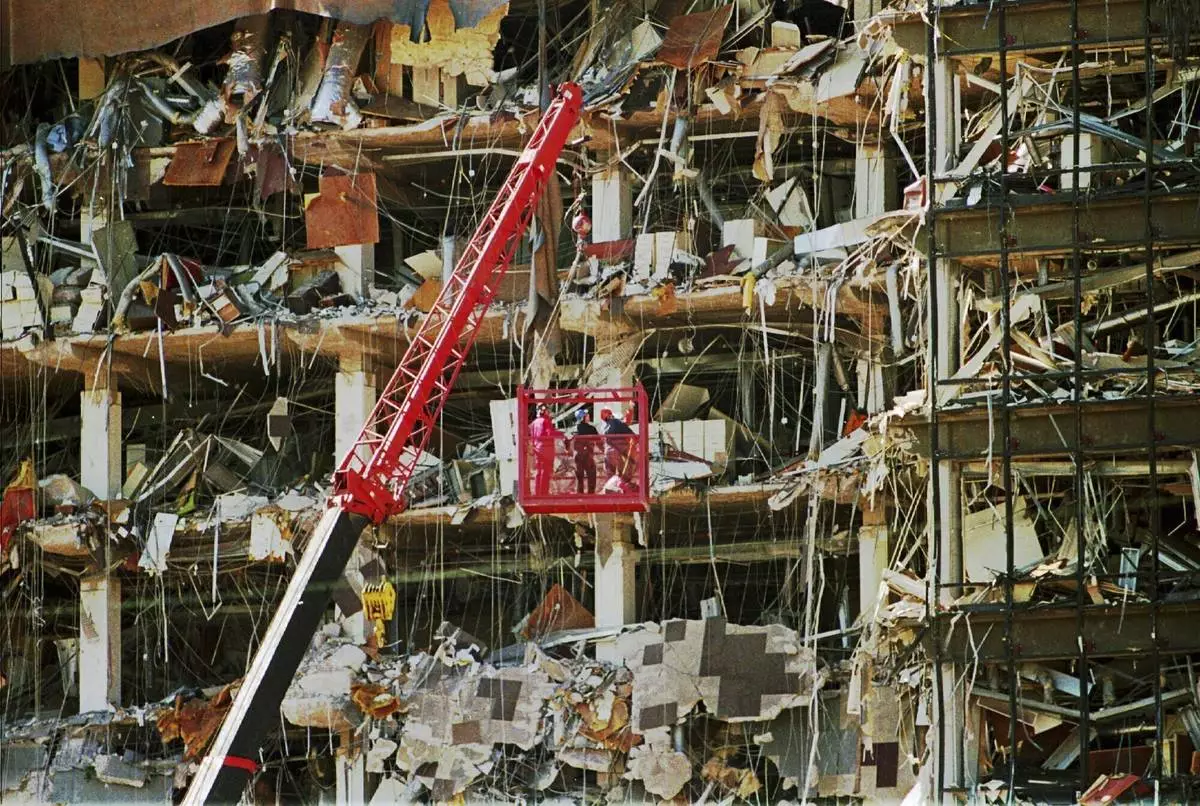
FILE - Rescue workers dig through the rubble from the Alfred P. Murrah Federal Building explosion in downtown Oklahoma City on April 20, 1995. (AP Photo/J.Pat Carter, File)
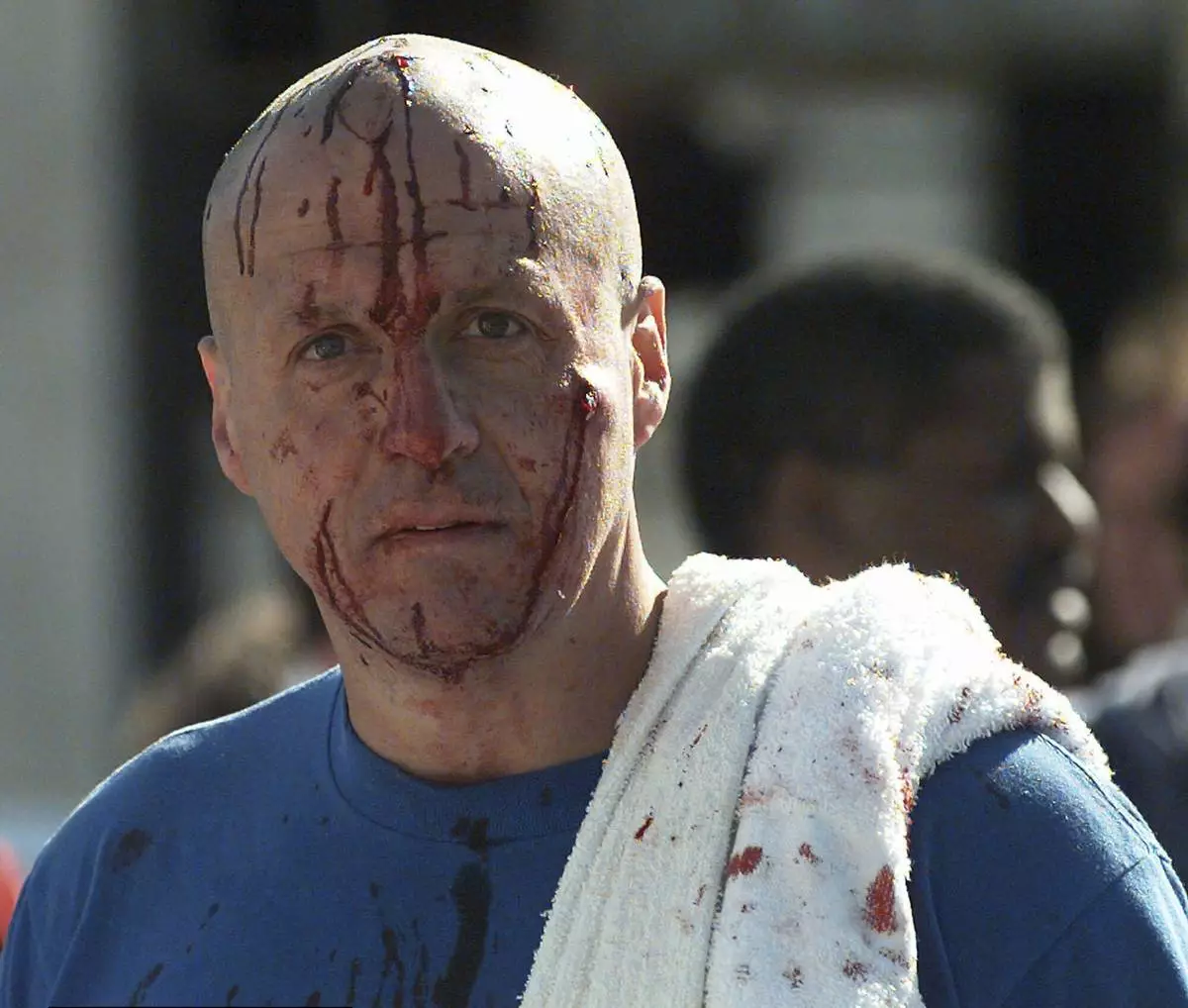
FILE - An unidentified man, his face covered with blood, looks at the bombed Alfred P. Murrah Federal Building in Oklahoma City on April 19, 1995. (AP Photo/David Longstreath, File)
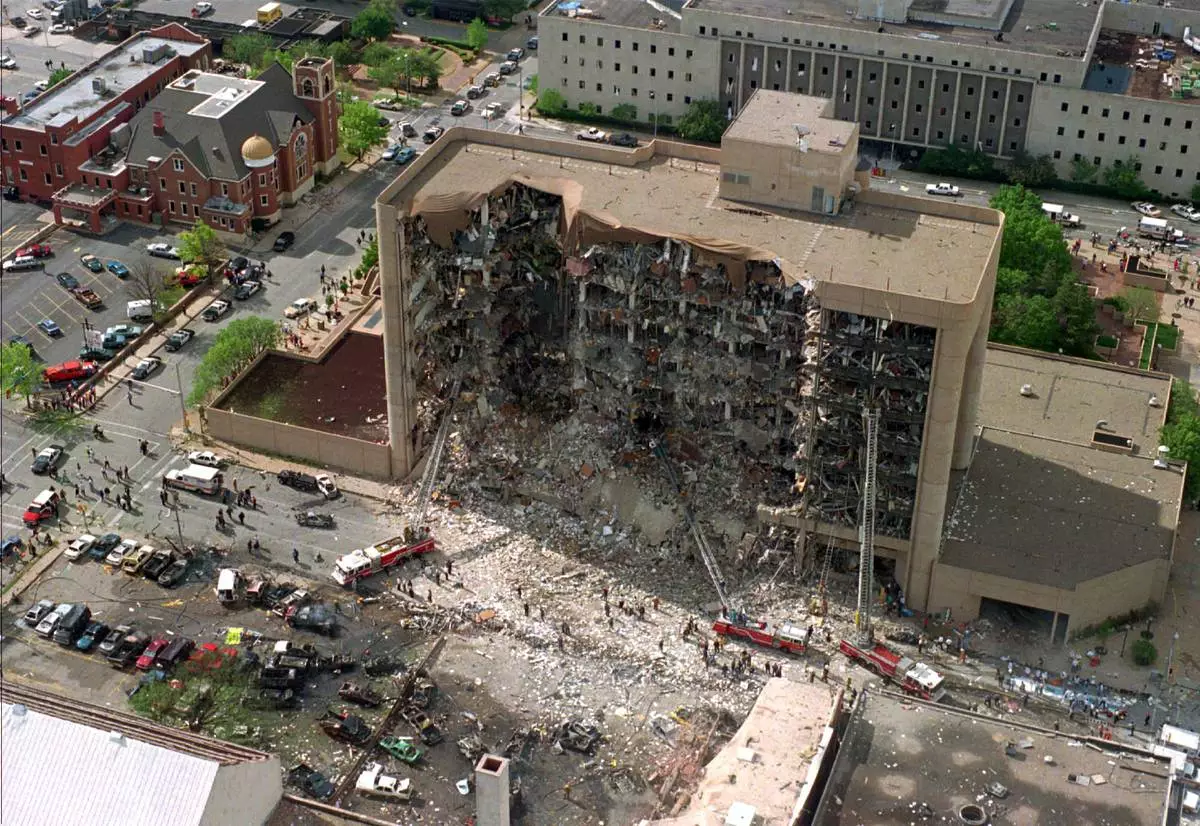
FILE - This aerial view shows the destroyed north side of the Alfred P. Murrah Federal Building in Oklahoma City after a massive bomb blast, April 19, 1995. (AP Photo, File)


